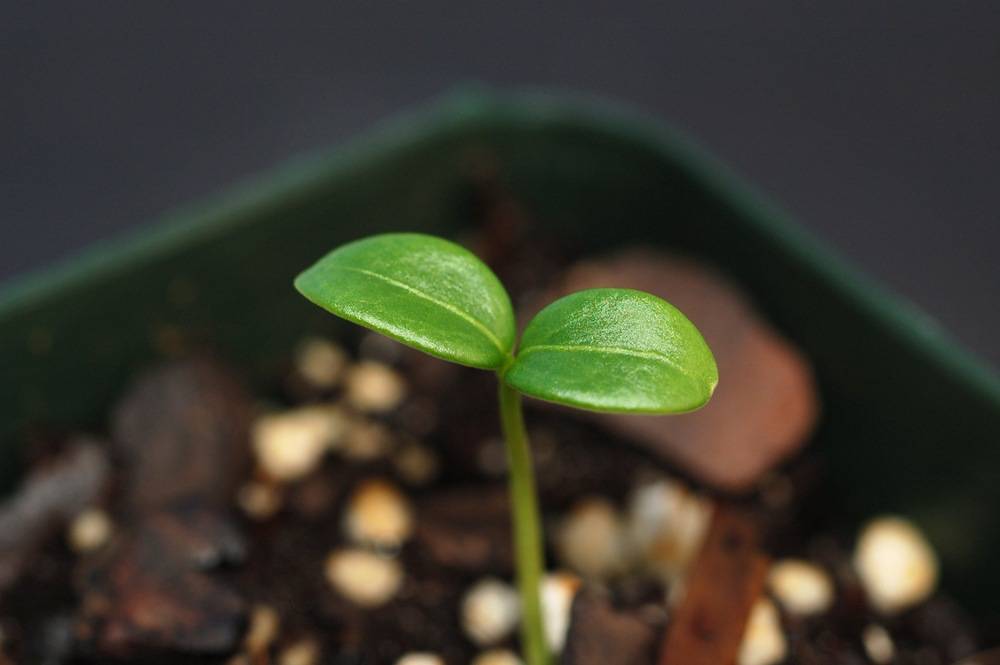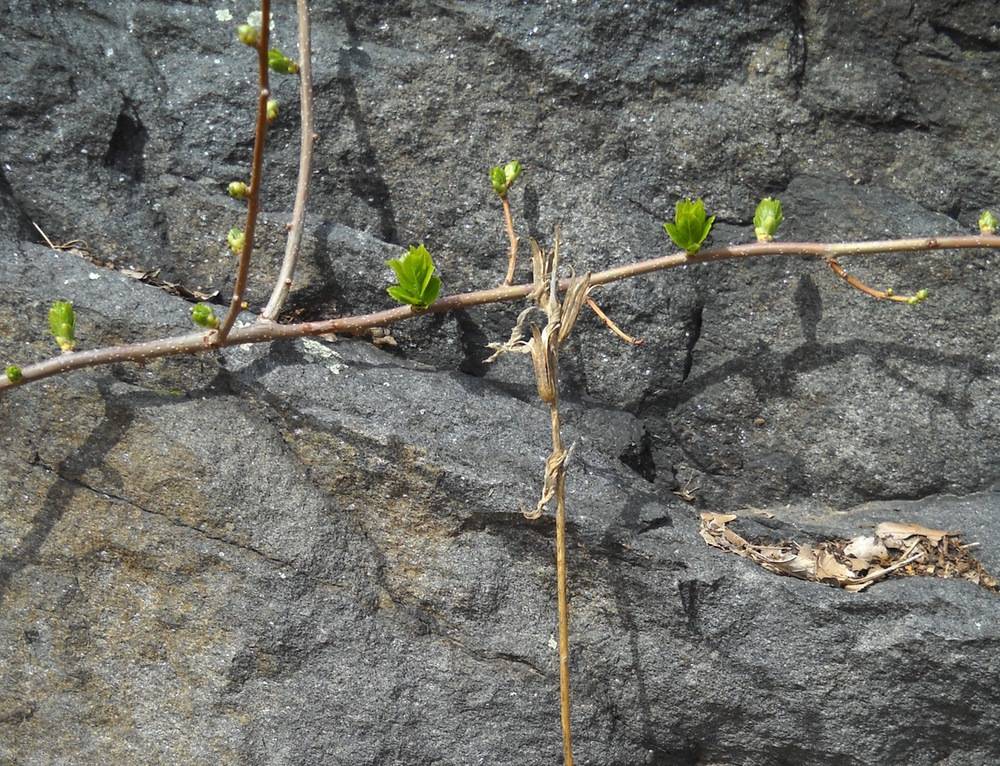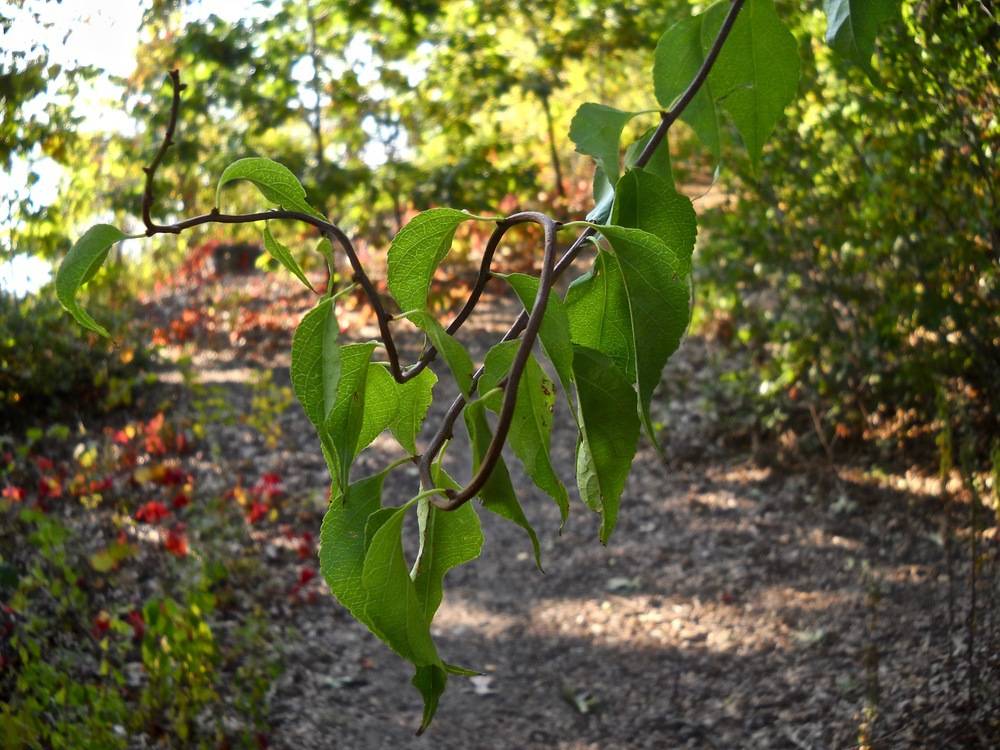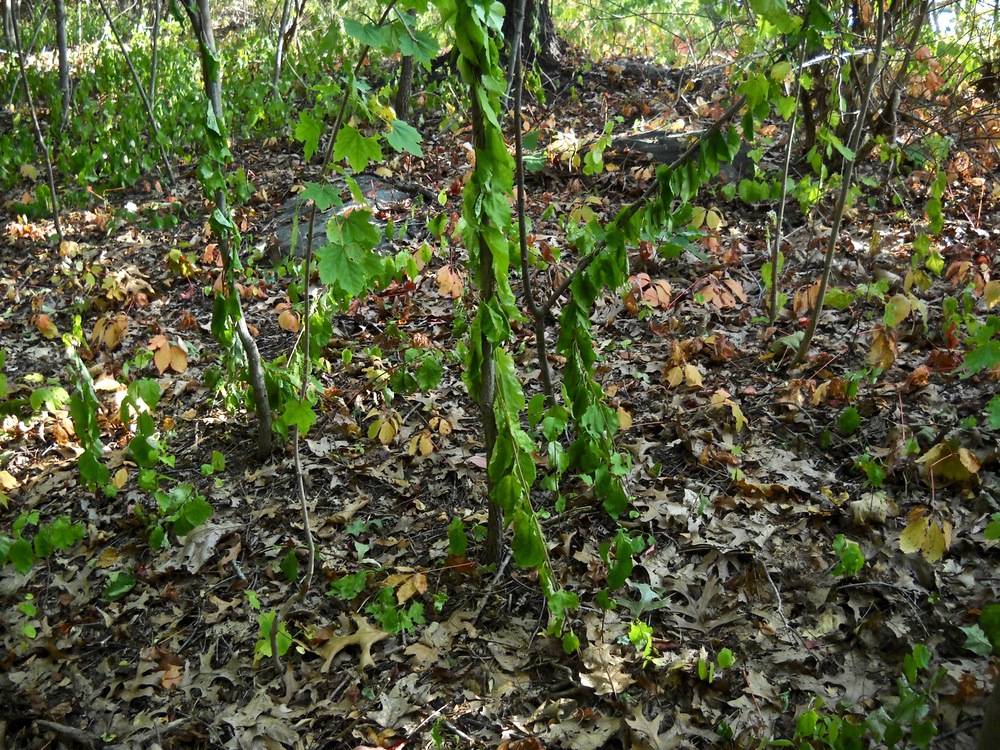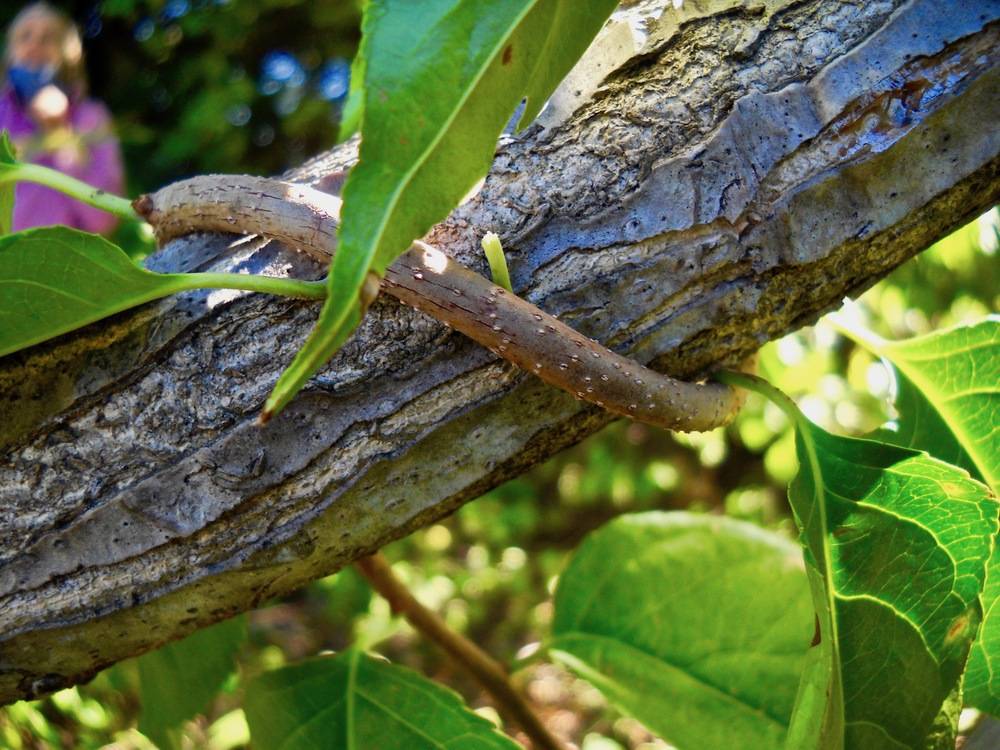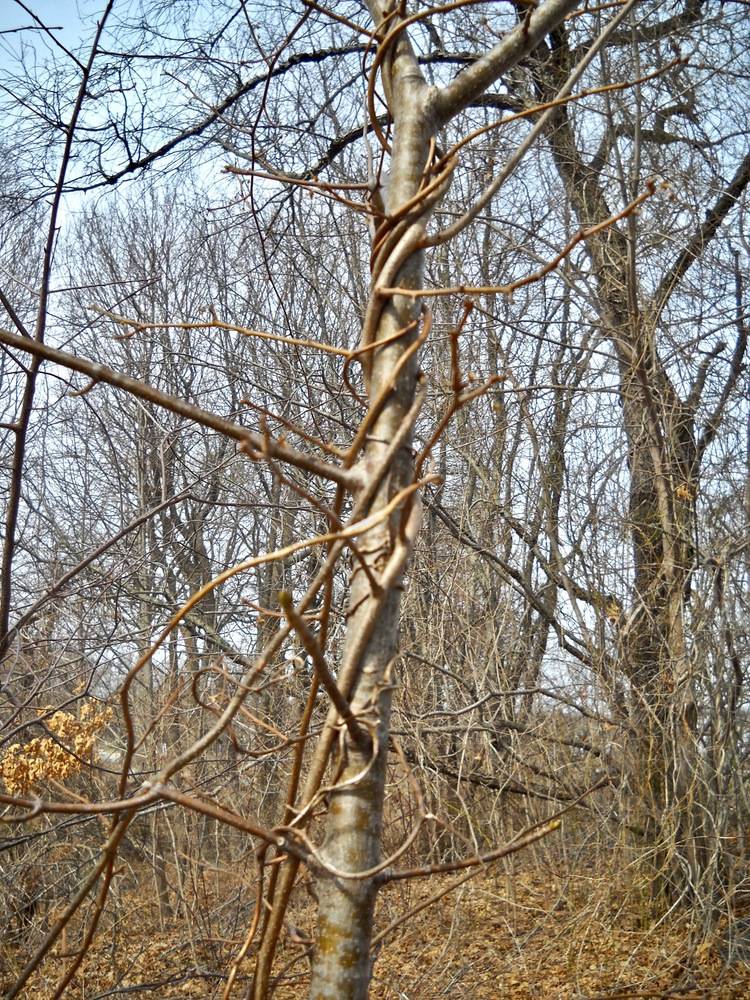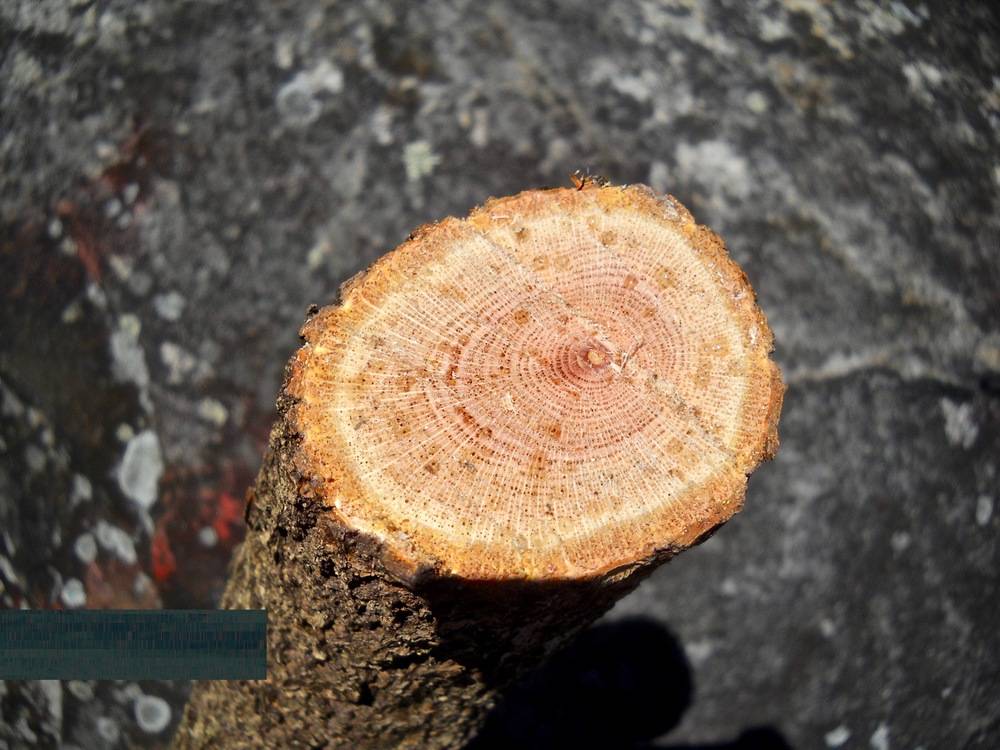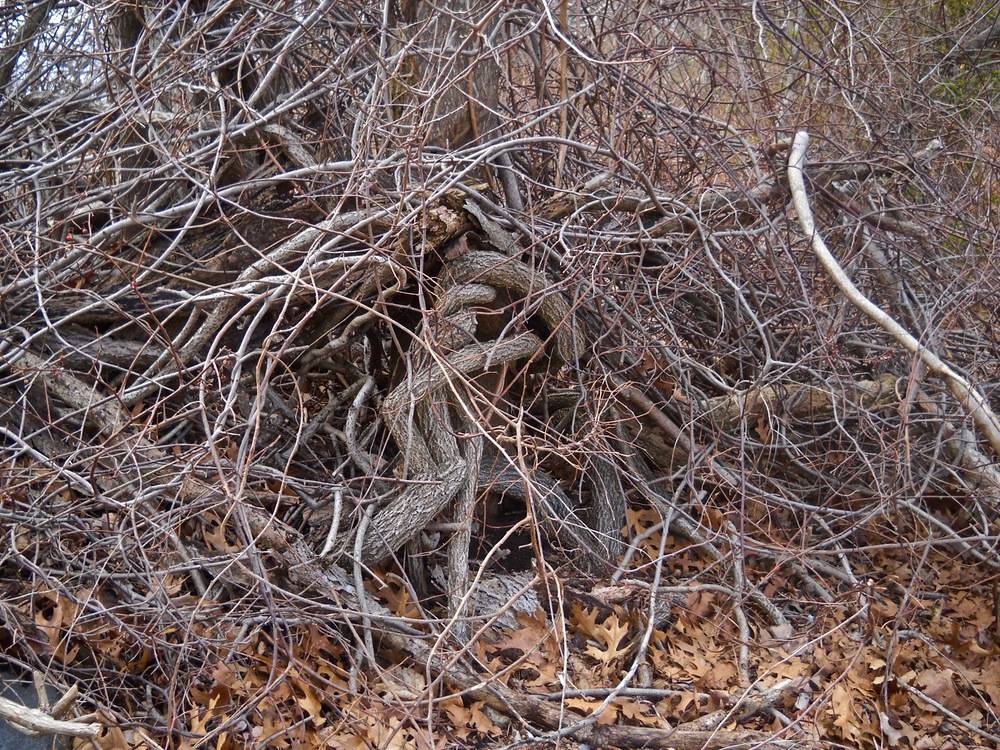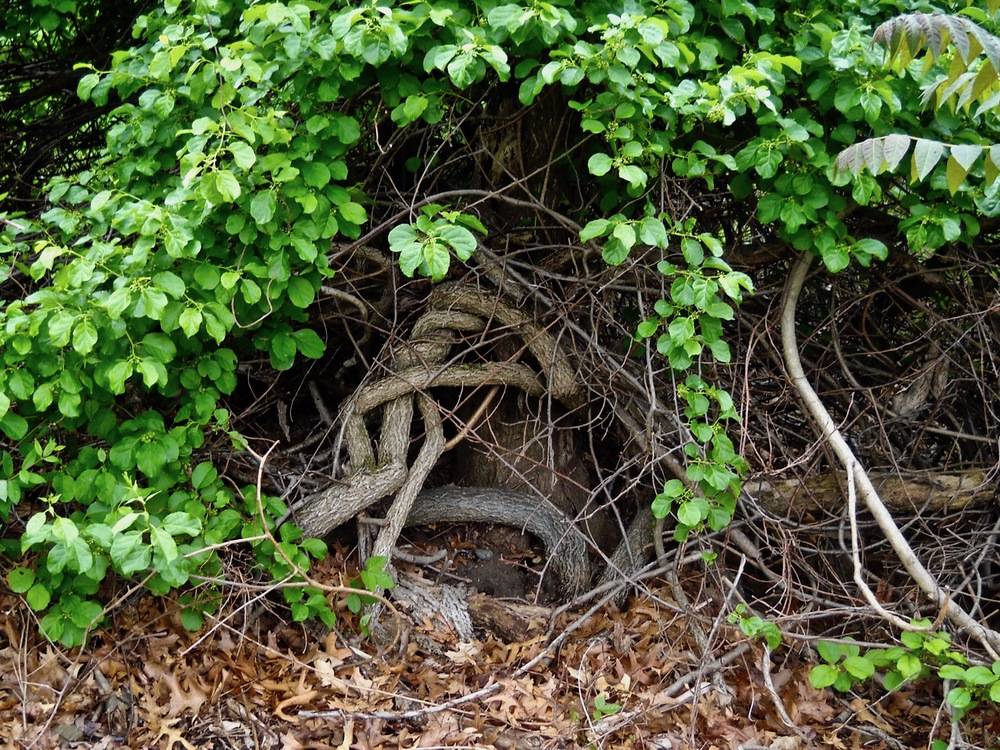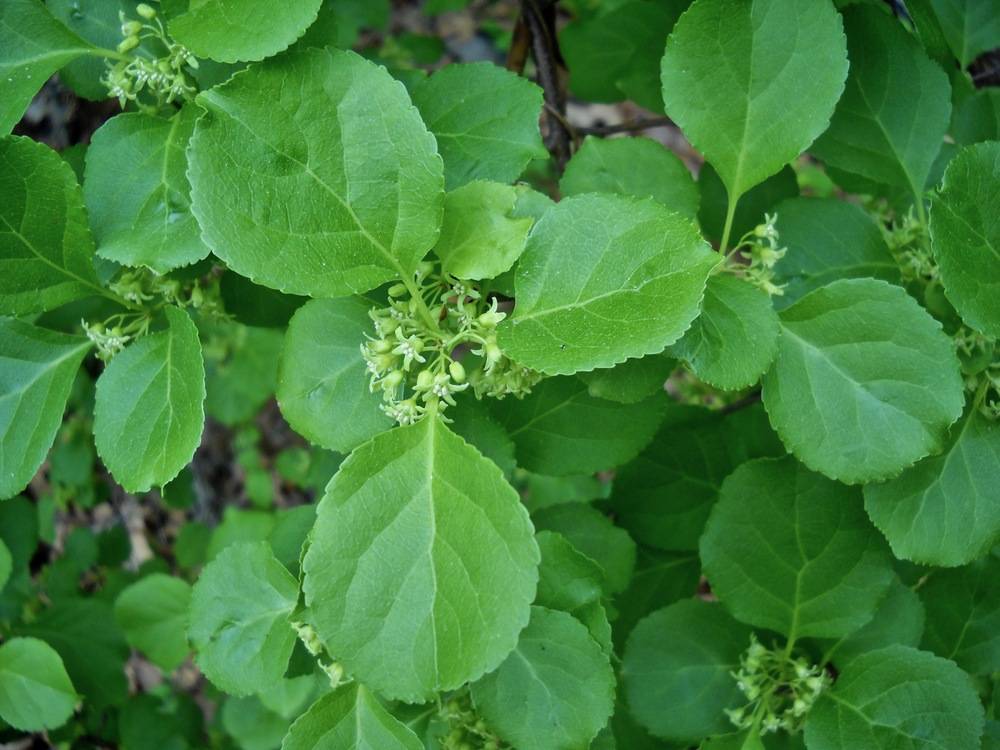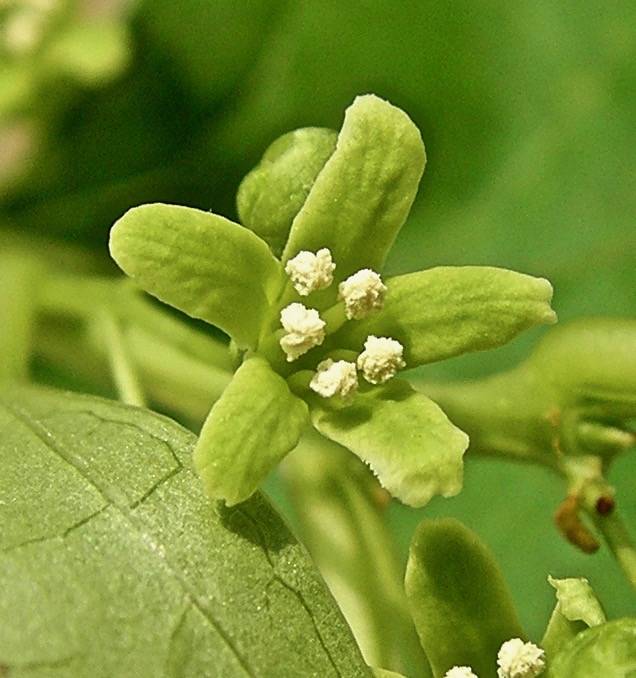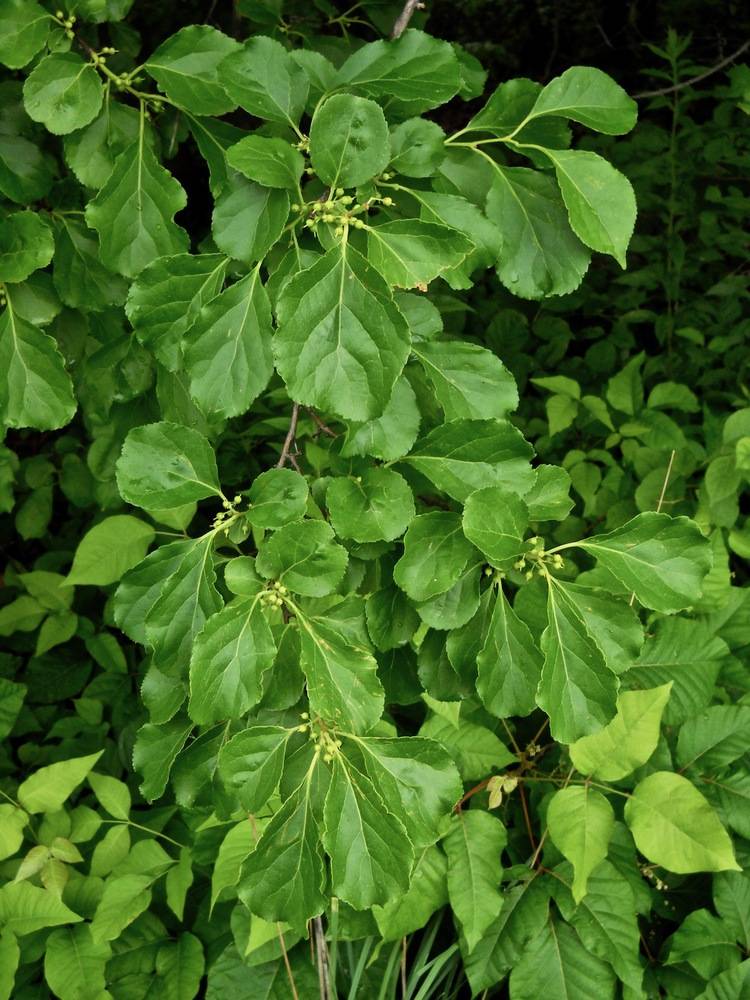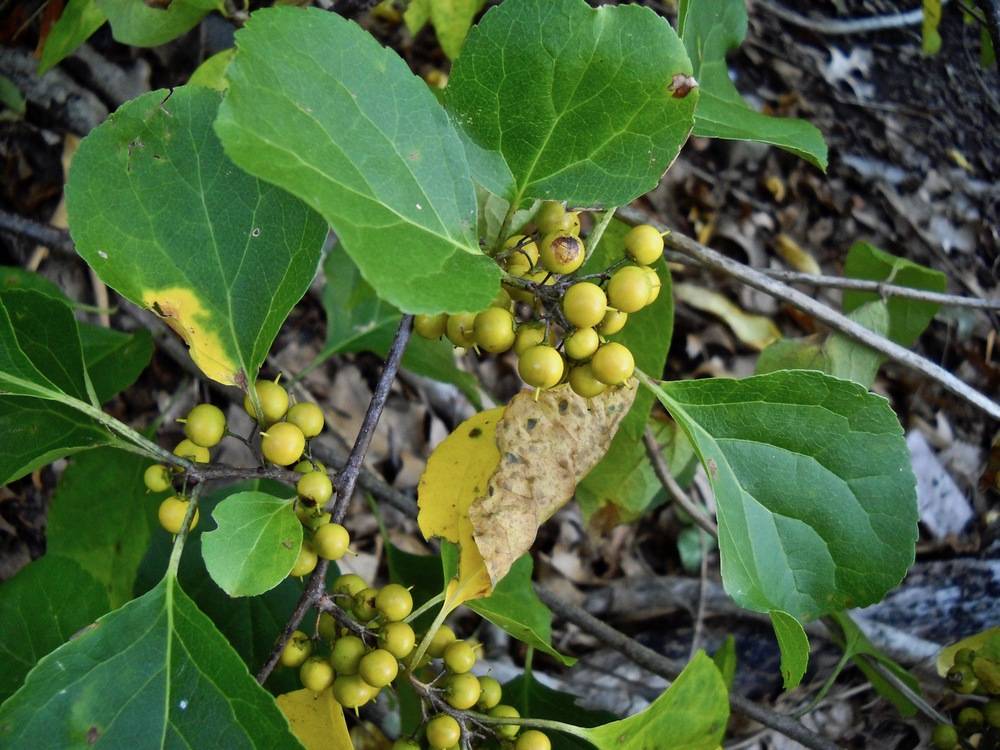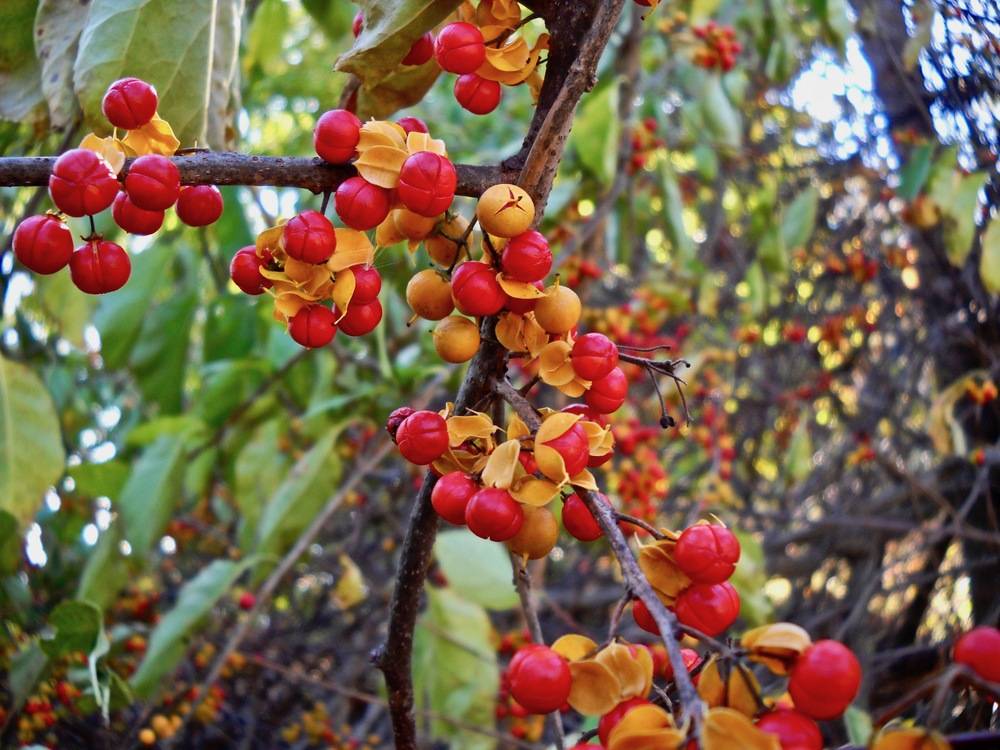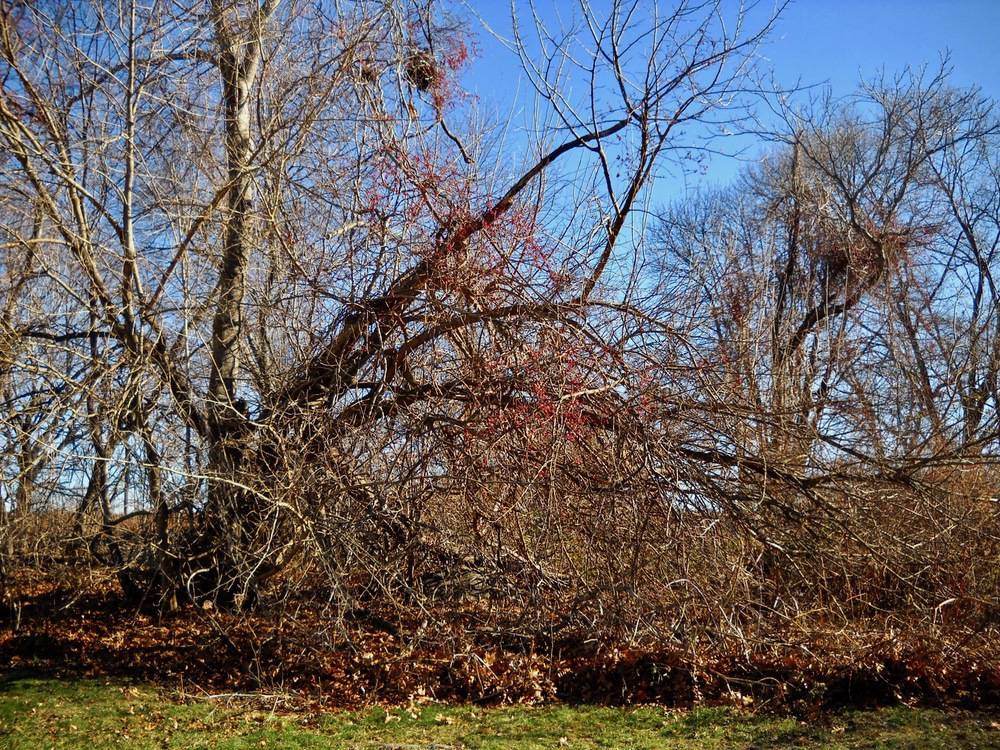Asian bittersweet
The Asian bittersweet is a perennial climber that is native to Japan, Korea and northeastern China. It was introduced to North America in 1860 for its ornamental berries, and has become much more abundant than the native American bittersweet. It favors edge habitats such as woodland openings, roadsides and fencerows, where light is plentiful and where vertical support is available for its upward climb. However, it can bide its time in the shady understory by sending out rhizomes to reach spots with more light.
If we were to compare abundance of woody plants at Salter Grove, the Asian bittersweet would clearly be the winner. It is the most successful of all the introduced species in the park. Stems of various sizes can be seen along all the trails of the park.
The young plant climbs by sending out a slender whip-like stem about the diameter of a pencil that reaches upward and outward in any direction. As soon as it makes contact with a vertical stem, or even just another bittersweet stem, it will spiral around and grow in diameter to the point of strangling its host.
Large-diameter bittersweet stems are able to produce enough foliage to cover the entire crown of large trees. In some cases you will see how the weight of the climber has brought down large branches or even the main trunk of the host. After falling, bittersweet stems and foliage often grow into tall tangle mounds at ground level.
It is possible to estimate the age of a bittersweet from counting annual growth rings in a cross section of the stem, as is usually done for trees. The lighter rings represent wood growth in spring and early summer while the darker rings represent growth in late summer and fall. The 3" x 2.5" cross section shown above has 30 dark rings, suggesting an estimated age of 30 years.
The Asian bittersweet is dioecious which means a plant has either male or female flowers. Mature female plants produce sizable fruit crops that persist through the winter. The fruits are toxic to humans but are consumed by birds who effectively dispersed the seeds. nonetheless, humans have been unintentional dispersers because the attractive fruits were popularly used in floral arrangements and were thus transported to localities far from the parent plants.

